Type 72 Non-Metallic is a Chinese circular, plastic bodied landmine which is designed to damage or destroy a vehicle by blast effect.

The Tellermine 42 (T.Mi.42) was a German metal-cased anti-tank blast mine used during the Second World War. The mine was a development of the Tellermine 35 with improved resistance to blast. It was followed by the simplified Tellermine 43. The Tellermine consists of a circular pressed steel main body with a large central pressure plate. The pressure plate is smaller than the earlier Tellermine 35, which increases the mine's resistance to blast. Two secondary fuze wells are provided for anti-handling devices, one in the side, and one on the bottom of the mine. The mine has a carrying handle.

The Tellermine 43 was a German circular steel cased anti-tank blast mine used during the Second World War. It was a simplified version of the Tellermine 42, which enabled simpler production techniques. Between March 1943 and the end of World War II, over 3.6 million Tellermine 43s were produced by Germany. Copies of the mine were produced by several countries including Denmark (M/47), France and Yugoslavia (TMM-1).
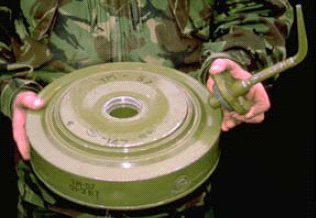
The TM-57 mine is a large, circular Soviet metal-cased blast anti-tank mine. It can either be triggered by a pressure or a tilt-rod fuze. A development of the TM-46 mine, it is found in Africa, the Middle East, and South East Asia.

The M15 mine is a large circular United States anti-tank blast mine, first deployed during the Korean War. Essentially, it is a larger version of the M6A2 anti-tank mine, which it replaced. Although the M15 has been superseded by the M19 mine, the U.S. retains large stocks of M15s because they are still regarded as reliable and effective weapons. When used against main battle tanks the M15 is primarily a "track-breaker" which creates mobility kills, but has a comparatively small likelihood of causing crew fatalities. However, when used against light vehicles such as APCs or unarmored vehicles such as trucks the damage it can inflict is much more severe.

The VS-1.6 is an Italian circular plastic-cased scatterable anti-tank blast mine. It has very few metal components and is resistant to overpressure and shock. The mine can also be deployed conventionally and from helicopters. It was produced by Valsella Meccanotecnica, but production has ceased.
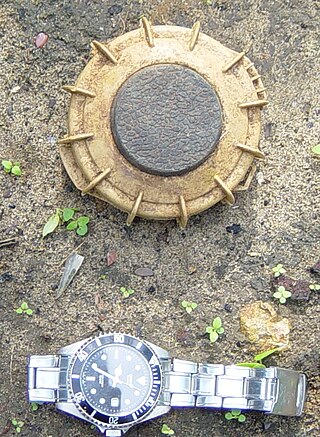
The VS-50 is a circular plastic-cased anti-personnel blast mine that entered production in 1985. It was formerly made by the now-defunct Valsella Meccanotecnica SpA, an Italian high-tech defence company specialized in area denial systems. The company also the made the Valmara 69, and was one of the first to implement plastic construction for landmines. The VS-50's design is similar to that of the TS-50 and VS-MK2 mines. It is blast resistant and can be used in a minimum metal configuration. Though unlikely to kill, its explosive charge is quite sufficient to destroy the victim's foot, being capable of penetrating 5 mm of mild steel leaving an 80 mm-diameter hole.
The PT Mi-K is a Czechoslovakian metal-cased anti-tank blast landmine. The mine uses a metal grid instead a pressure plate, this gives it resistance to overpressure. The mine is no longer produced, but is found in Afghanistan, Cambodia, Eritrea, Namibia, Nicaragua and the Western Sahara.

The TMA-1 and TMA-1A are circular, plastic cased Yugoslavian minimum metal anti-tank blast mine. The mine consists of an upper plastic pressure plate, and the lower body containing the main charge. The pressure plate has eight triangular raised sectors, and a central fuze cap. The pressure plate is held in place by four plastic pins, which when sufficient pressure is applied, shear allowing the pressure plate to collapse onto the mine body, triggering the UANU-1 fuze. A secondary fuze well is provided in the base of the mine, allowing the use of anti-handling devices. The mine is found in Bosnia, Croatia and Kosovo.

The TMA-2 is a rectangular plastic cased Yugoslavian minimum metal anti-tank blast mine. It is very similar in appearance and size to the PT-56, which it replaced. The mine consists of two sections, an upper ribbed pressure plate with two large circular fuze caps, and a lower base section containing the main charge and two primary fuze wells containing UANU-1 fuzes. A secondary fuze well is provided in the base of the mine for an anti-handling device.
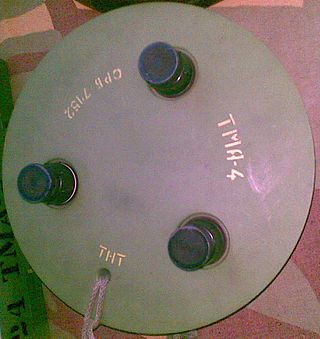
The TMA-4 is a circular plastic cased Yugoslavian minimum metal anti-tank blast mine. It is a modernized version of the TMA-3. The mine is basically a cast block of TNT with three fuze wells cut into it, encased in plastic. Three black plastic UTMA-4 fuzes are installed into the top surface of the mine. A thin rope carry handle is also provided. The small pressure plate area of the fuzes make the mine resistant to overpressure from explosive demining techniques. Additionally the low metal content of the mine make it very difficult to detect. Although no secondary fuze well is provided, it is possible that the mine could be fitted with improvised anti-handling devices.
The TMA-5 and TMA-5A are rectangular plastic cased Yugoslavian minimum metal anti-tank blast mines. The mine's top surface has a single circular threaded fuze cap in the center, covering the fuze well. Additionally there is a small compartment for storing the fuze when disarmed. The corners of the mine have small posts to permit stacking of the mine. Although the mine does not have a secondary fuze well, it could easily be fitted with an improvised one in the field. The mine uses a single black plastic UANU-1 fuze.

The TMM-1 is a circular, metal-cased, Yugoslavian anti-tank blast mine. It is a direct copy of the German Tellermine 43. The mine has a central fuze well that is covered by a screw on pressure plate. Two secondary fuze well are fitted to the side and bottom of the mine allowing the installation of anti-handling devices. The mine is found in Bosnia, Croatia, and Serbia.
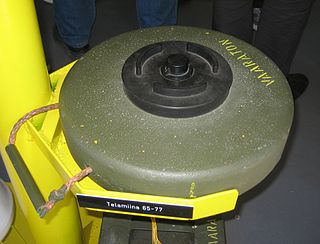
The TM 65 is a circular Finnish minimum metal anti-tank blast mine. It is broadly based on the Russian TM-62 mine. The mines body is made from a thin shell of fibreglass over a cast block of explosive, with a central fuze well that holds the pressure fuze. The original TM 65 used a US-65 fuze as used in the SM-65 anti-personnel mine, the later TM 65 77 uses a pressure fuze similar to the Russian MV-5 fuze called Painesytytin 77.
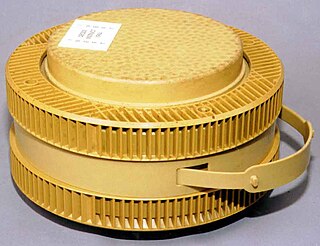
The TC/2.4 is a circular plastic cased Italian minimum metal anti-tank blast mine. The mine uses a blast and shock resistant pneumatic fuze. It could be laid by hand or mechanically, and could be fitted with anti-handling devices. An Egyptian copy of the mine is produced, designated as the M/80. The mine was used in Iraq, but is no longer produced.
The NR 25 is a circular Dutch steel cased anti-tank blast mine. It is broadly similar in appearance to the German Tellermine 43, although it is larger. The mine has a central domed pressure plate, underneath which is an NR-29 mechanical pressure fuze, which is inserted into a fuze well. A doughnut-shaped main charge surrounds a central booster charge. Two secondary fuze wells are provided on the side and base of the mine, for anti-handling devices.

The ATM-72 is a steel cased circular North Korean anti-tank mine. It is similar to the Russian TM-46, with a thick wire carrying handle and a filling plug. The mine uses a four pronged fuze, downward pressure on any of the levers will trigger the mine. The lever action of the mine makes it resistant to overpressure and blast.
The MAT/5 is an Italian circular, plastic-cased minimum metal blast resistant anti-tank blast mine. It uses a pneumatic fuze which is resistant to shock and blast, and is also claimed to be resistant to mine flails and mine rollers. The mine's plastic case is waterproof, and it can be laid in shallow water. Additionally the mine will function upside down. The mine can be fitted with anti-handling devices. The mine is no longer in production.
The MAT/6 is an Italian circular synthetic resin-cased minimum metal blast resistant anti-tank blast mine. It uses a pneumatic fuze which is resistant to shock and blast, and is also claimed to be resistant to mine flails and mine rollers. The mine's plastic case is waterproof, and it can be laid in shallow water. Anti-handling devices may be fitted to the mine.

The TS-50 is a 90 mm (3.5 in) diameter circular Italian blast resistant minimum metal anti-personnel mine designed and produced by Valsella Meccanotecnica (Italy).














